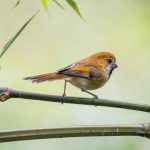 Most encounters people have with turkeys either involve a dead, roasted bird on a dinner table or sliced turkey between two pieces of bread. Neither are very attractive. Of course, a live male Wild Turkey isn’t generally considered very attractive to people either, with the big hairy “beard” growing from their chest and caruncles and a snood growing from their featherless head. To female turkeys, however, a strutting male Meleagris gallapavo is nearly irresistible. But exactly is the reason behind the strutting and spitting and gobbling? And is anything more happening than males showing off for females?
Most encounters people have with turkeys either involve a dead, roasted bird on a dinner table or sliced turkey between two pieces of bread. Neither are very attractive. Of course, a live male Wild Turkey isn’t generally considered very attractive to people either, with the big hairy “beard” growing from their chest and caruncles and a snood growing from their featherless head. To female turkeys, however, a strutting male Meleagris gallapavo is nearly irresistible. But exactly is the reason behind the strutting and spitting and gobbling? And is anything more happening than males showing off for females?
Like many gallinaceous, or game, birds, male Wild Turkeys do their best to impress females and females choose which males with whom they are going to mate. A single impressive male turkey strutting by itself might attract some females to mate with but more than one male will attract more females. The more dominant male will, of course, get to mate with more females than a less dominant male but studies have shown that when male turkeys are displaying together they attract more females than a single tom would. Also, the males that display together tend to be rather closely related so even if the less dominant male doesn’t get to mate some of its genetic material will still likely be passed to the next generation.
Unlike other species that strut their stuff turkeys seem not to have set leks where they display. I have seen Wild Turkeys displaying on the side of busy roads several times and one of the birds in this post was actually photographed in the middle of a road in suburban New Jersey.
Wild Turkeys have come back from a population in the neighborhood of 30,000 at the turn of the nineteenth century to a population numbering well into the millions now. This is because of intensive and extensive work reintroducing them to areas from which they extirpated and because, apparently, turkeys will reproduce like bunnies when given the opportunity. Maybe those caruncles are an aphrodisiac?
Wild Turkey strutting his stuff in Englewood, New Jersey (click for a bigger version)
The next time you hear gobbling from your woods just remember that the sound is that of Wild Turkeys looking for love. Wish them well so that you may continue to have turkeys in your neighborhood!
…
A fish may love a bird, but where would they live?
-Drew Barrymore
Bird Love Week is seven days of exploration of avian amore here on 10,000 Birds from April 22-28. We love birds, and the topic of birds loving other birds and in the process making more birds is a fascinating one we know you will enjoy. Mike, Corey, and a bevy of Beat Writers have been working on this one for awhile as the perfect expression of our love of all things avian. To see all of our Bird Love Week posts, just click here. But be warned – Bird Love Week is neither for the faint of heart nor for the permanently prudish – you may end up with images that you never imagined seared onto your brain.
………
















Leave a Comment